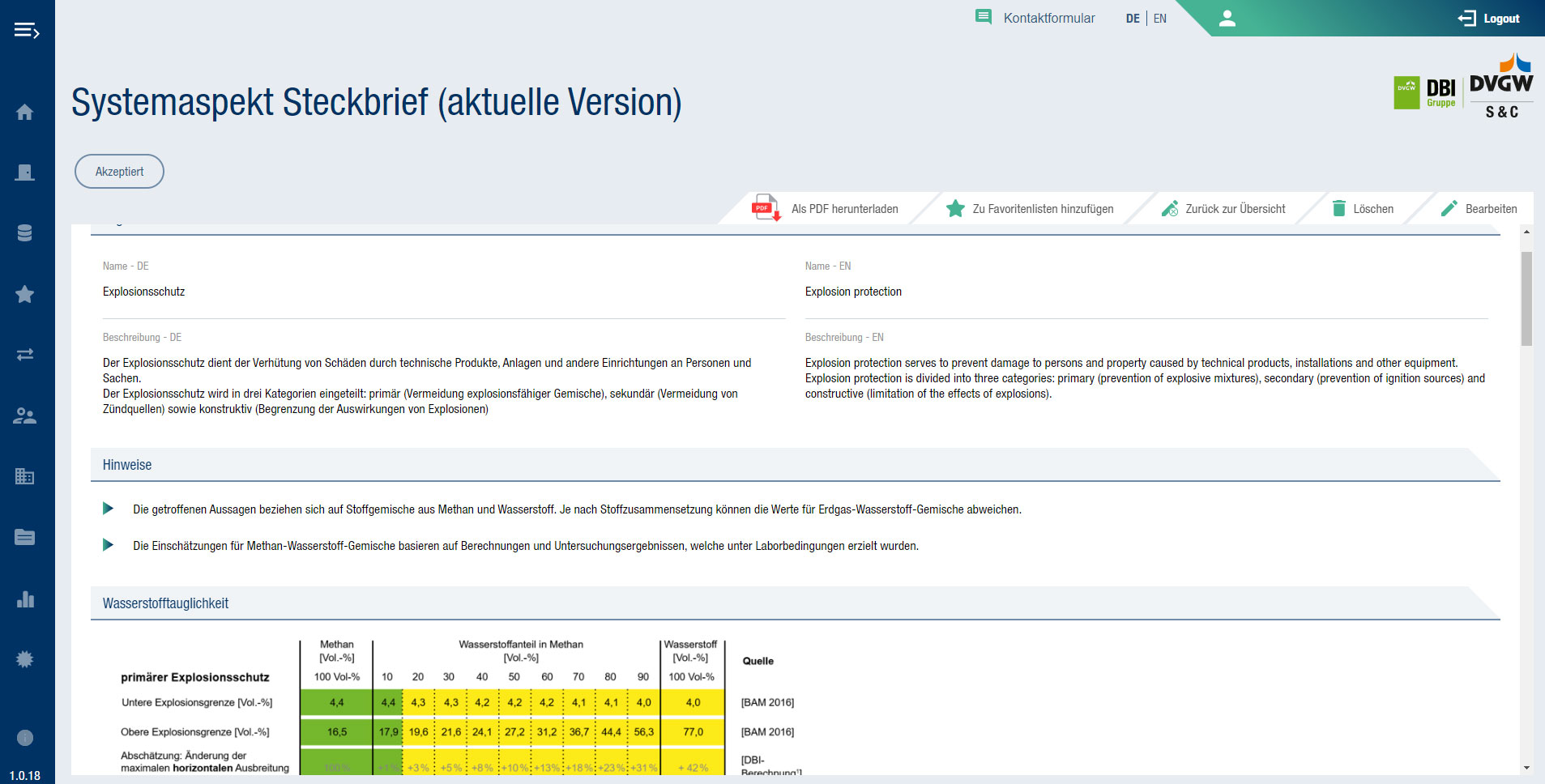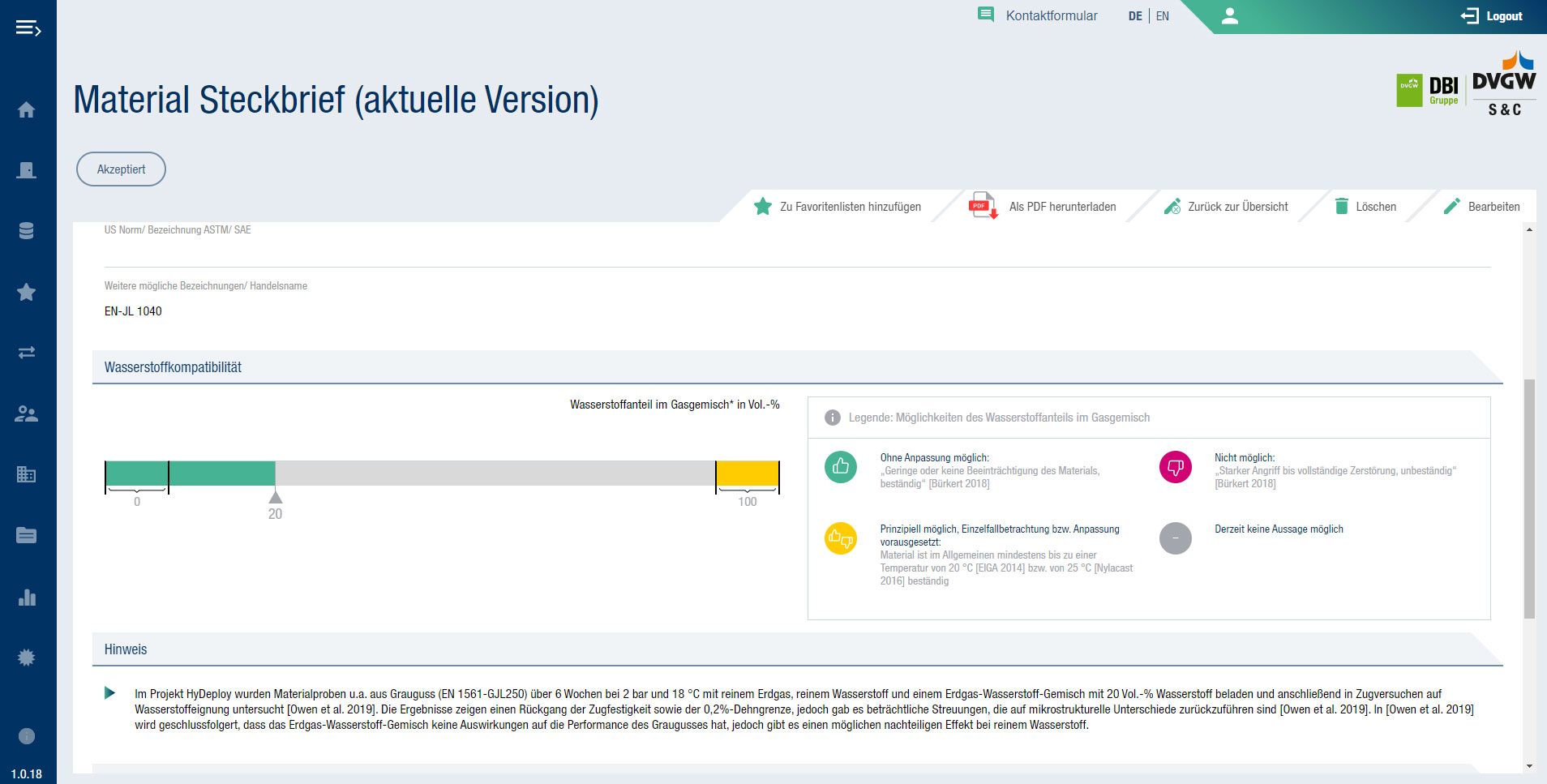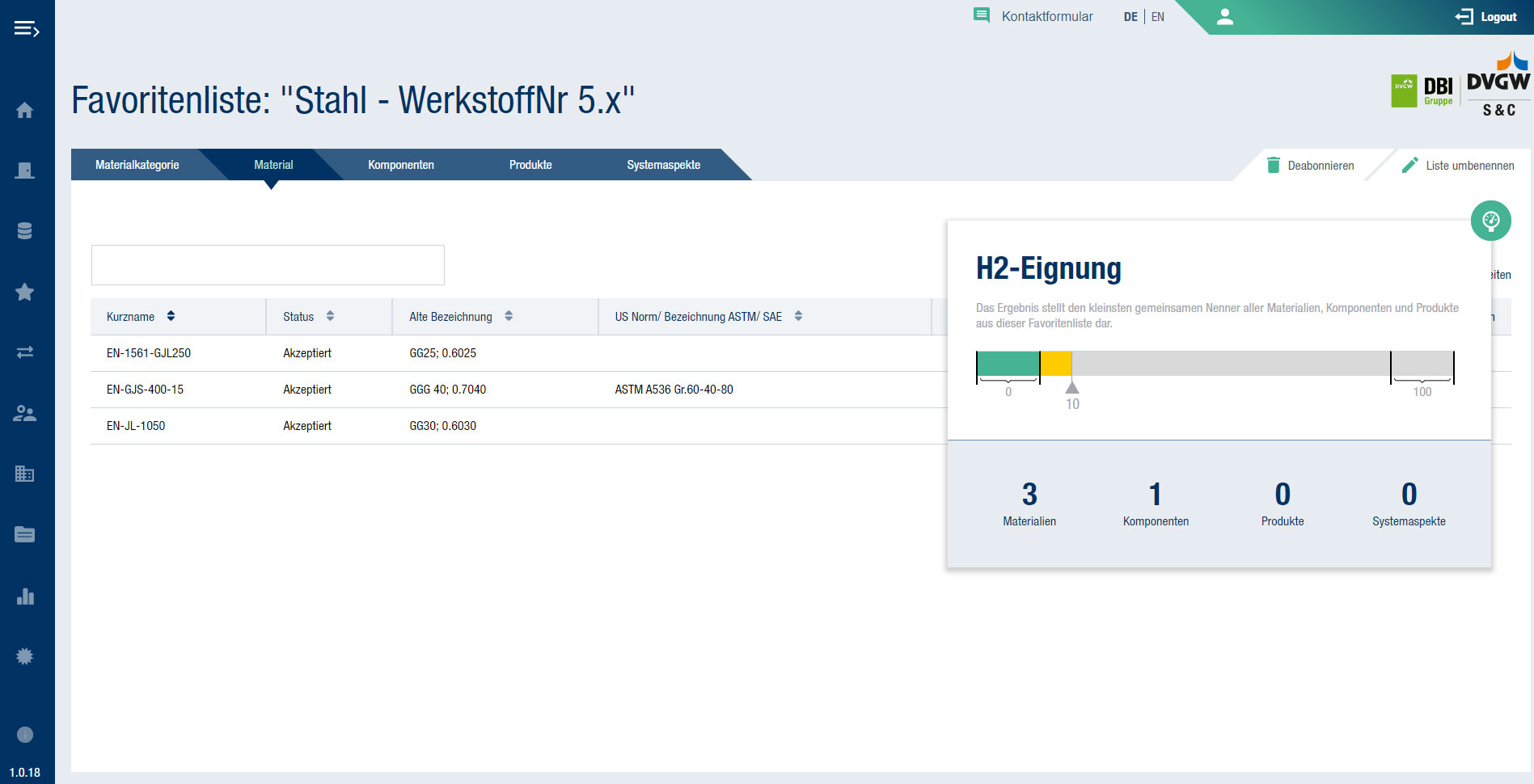
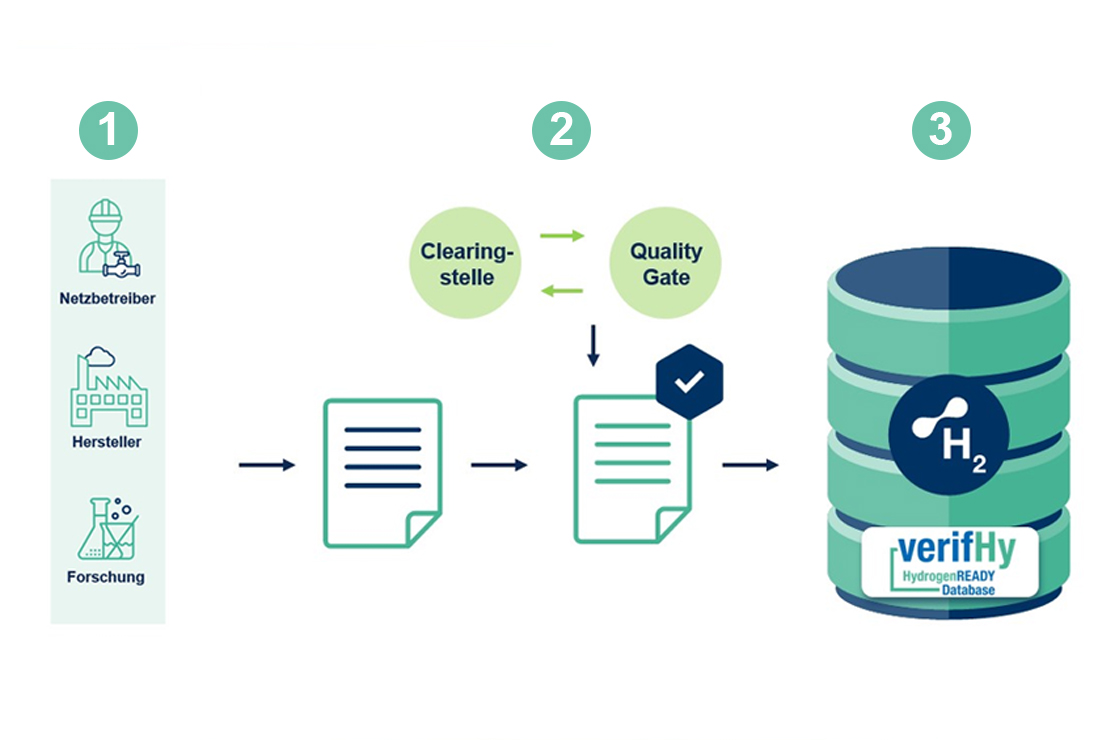
The verifHy database contains an extensive stock of information, which includes findings from research and science as well as information from manufacturers. The database is constantly being expanded, because verifHy as a knowledge platform thrives on the co-operation of all those involved. Manufacturers of components in the gas grid have the opportunity to enter their products and their hydrogen compatibility parameters. The latest research results are also successively added to the database. Grid operators also have the opportunity to submit suggestions for changes.
The Quality Gate checks the plausibility and completeness of the manufacturer's supporting documents in particular for proof of H2 suitability. In the event of queries, the Quality Gate seeks contact with the submitter of the change.
If no consensus can be reached regarding the entry in verifHy, the individual case is passed on to the clearing centre, which is set up as a DVGW committee and assumes a higher-level control and clarification function, so to speak. It is the authorising body when it comes to disputed changes to data within the database. Since such a release requires a high level of authority, the clearing centre is staffed by a number of proven experts.
The basic verifHy database initially contains information on 250 materials, 75 component profiles and 105 products that have been compiled over many years of research. This database is now being continuously expanded with the launch of verifHy. All data in verifHy is reliable, as it is not recorded unfiltered and the DVGW carries out continuous plausibility checks.
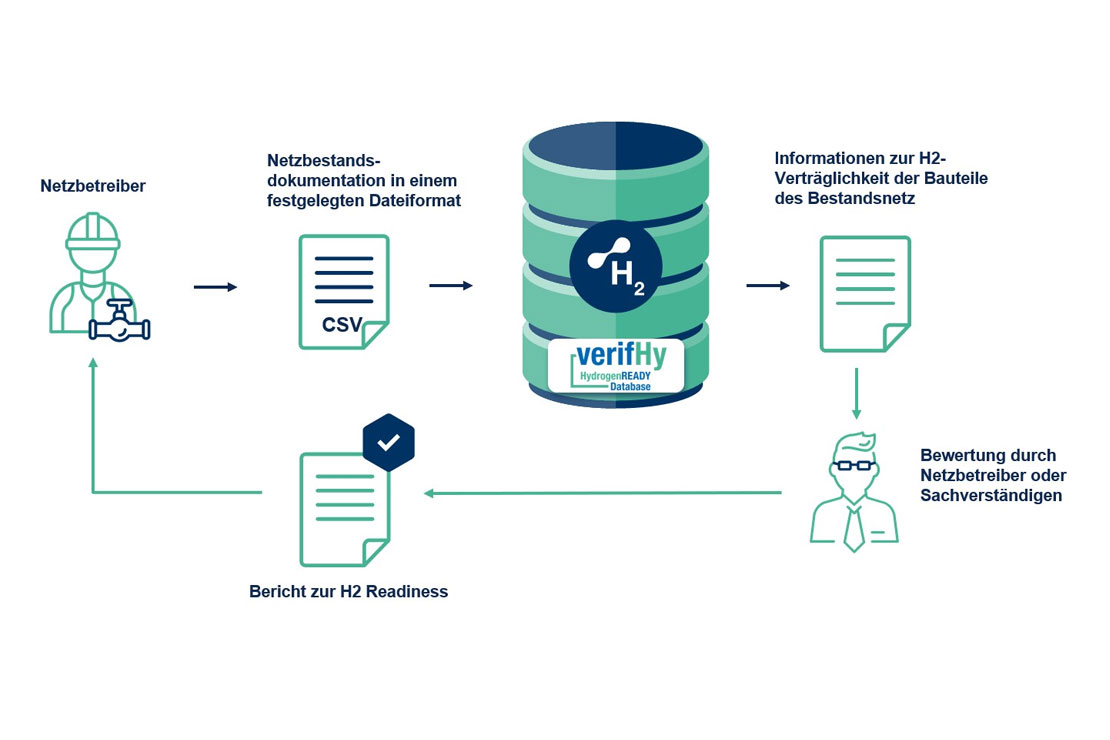
There are two basic approaches to using the database:
Batch processing via an authorising CSV file
A clear connection is required between the assets that the grid operator wishes to value and the database. In order to establish this connection, a CSV file was developed, which is deliberately not a real interface. This file serves as a translation tool between the data held by the grid operator and the database. The more accurate the grid operator's data is, the more accurate the database's statements will be with regard to hydrogen compatibility. There are five mandatory fields in which obligatory information must be entered. In addition, there are five further fields that are optional and can improve the assessment result.
Use as a reference work in keywords
It is possible to manually search for specific material properties or information on products and components in the database. The information displayed can then also be downloaded as a PDF.
This is what the verifHy hydrogen database looks like
